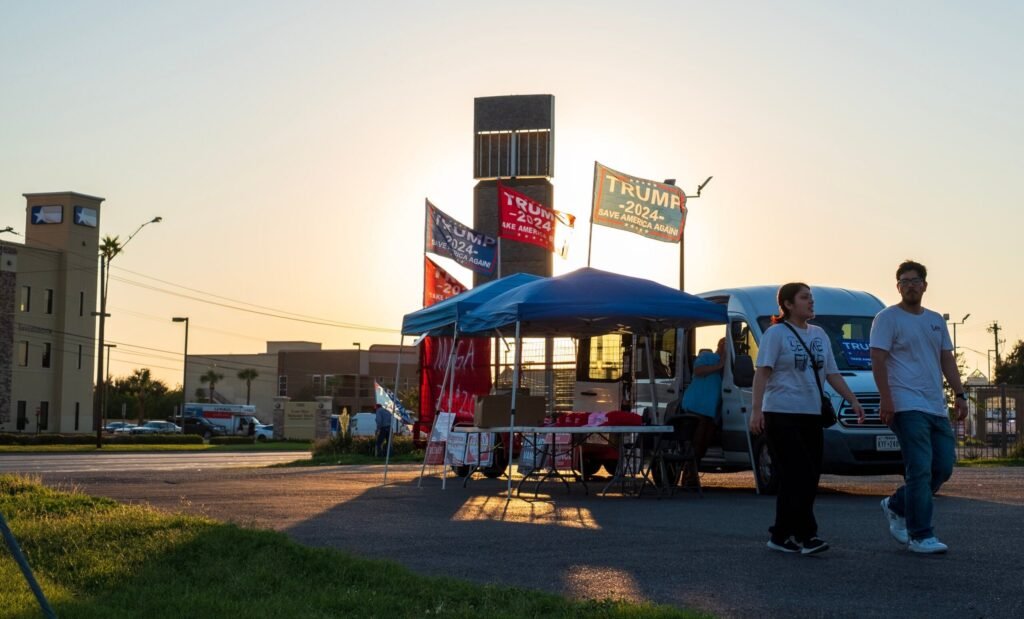The Political Shift in Texas’ Rio Grande Valley: A Turning Point for Democrats?
Introduction: Understanding the Rio Grande Valley’s Political Landscape
Four years ago, the Rio Grande Valley (RGV) in Texas—a predominantly Hispanic region consisting of four counties and home to approximately 1.4 million residents—pitted then-President Donald Trump against then-candidate Joe Biden. Biden won the traditional Democratic stronghold by about 15 points; however, this was a substantial reduction from the margins that Hillary Clinton had achieved in 2016. Notably, Trump managed to flip Zapata County, drawing national attention.
2022 Midterm Elections: Glimmers of Hope for Republicans
In the wake of Trump’s gains in the Valley, Republicans anticipated a "red wave" during the midterm elections, extending their appeal to the conservative values and economic interests of Valley Latinos. Their attempts yielded mixed results: while they flipped a congressional and a state House seat due to redistricting, other races saw minimal GOP success. Democratic gubernatorial candidate Beto O’Rourke managed to maintain the status quo, winning the four-county region with margins reminiscent of Biden’s.
2024 Elections: A Trump Wave in Deep South Texas
Fast forward to the recent elections, and the political dynamics have drastically shifted. This time, Trump managed to secure victories across all counties in the Valley, a stark reversal from the previous cycles where Democrats felt secure. For example, in Hidalgo County, which houses the largest population in the Valley, Trump defeated Kamala Harris by a mere three points—an unprecedented shift considering that previous Democratic victories here ranged from 17 to 40 points in prior election cycles.
Key County Results
- Hidalgo County: Trump +3
- Cameron County: Trump +6
- Starr County: Trump +16
- Willacy County: Trump +3
These numbers illustrate a clear and alarming trend for Democrats. In Hidalgo and Cameron Counties, where earlier Democratic candidates like O’Rourke and Clinton achieved comfortable victories, Trump’s gains reflect a deeper rift within the community.
Congressional and State Legislature Impacts
In a clear sign of changing tides, GOP Congresswoman Monica De La Cruz was re-elected with a significantly more comfortable lead than in the past election. Meanwhile, Democratic Congressman Vicente Gonzalez barely held onto his seat, and fellow Democrat Henry Cuellar faced similar challenges in his district, which extends into Starr County.
In the state legislature, Republicans made notable gains by unseating Democratic Senator Morgan Lamantia and effectively holding their ground in Cameron County’s state House seat.
Down-Ballot Resistance: A Mixed Picture for Democrats
While the red wave left a significant mark on top-ballot races, down-ballot results displayed a nuanced landscape. Cameron County, despite leaning towards Trump, also favored failed Democratic Senate candidate Colin Allred by four points, alongside electing a non-incumbent Democratic sheriff by a remarkable 16 points. This duality suggests that while Trump may be appealing to voters for certain positions, Democrats still hold sway in specific local races.
Understanding the Shift: Potential Factors
The results raise crucial questions about the evolving political identity of Latino voters in Texas and the Valley’s unique societal framework. While Democrats once assumed that Trump’s nativism would alienate the Latino community, this assumption is increasingly being challenged.
Lower turnout rates compared to 2020—as seen in Hidalgo, Cameron, and Starr counties—did not solely account for Trump’s rise. Notably, Webb County, which is home to Laredo, also flipped to Trump by a surprising two points, showcasing a broader trend that extends beyond the Valley.
Looking Ahead: What’s Next for Texas Politics?
The upcoming elections will be instrumental in understanding whether the shifts observed during this election cycle are an anomaly or a longer-term trend. It is worth noting that South Texas should not be confused with the entire Latino population in Texas, which is spread across diverse urban centers throughout the state.
The Democratic Party now faces a critical juncture: they must rethink strategies to re-engage Latino voters and address their concerns more effectively. The possibility of a Democrat reclaiming lost ground in the Valley will require introspection, investment, and a refined message tailored to local values.
Conclusion: A Historic Moment for the Rio Grande Valley
The recent elections in the Rio Grande Valley signify a watershed moment in Texas politics, one that has left Democrats scrambling for solutions. The Trump-centric red wave that swept across this traditionally blue area presents a challenge to Democrats, urging them to reconsider their approach in one of their strongest bases. Will the party find a way to mend the widening gap, or will the trend toward red continue in Texas? Only time will tell.
For more insights into Texas politics, including detailed analyses and updates, refer to sources like CNN, Texas Tribune, and The Texas Observer.


